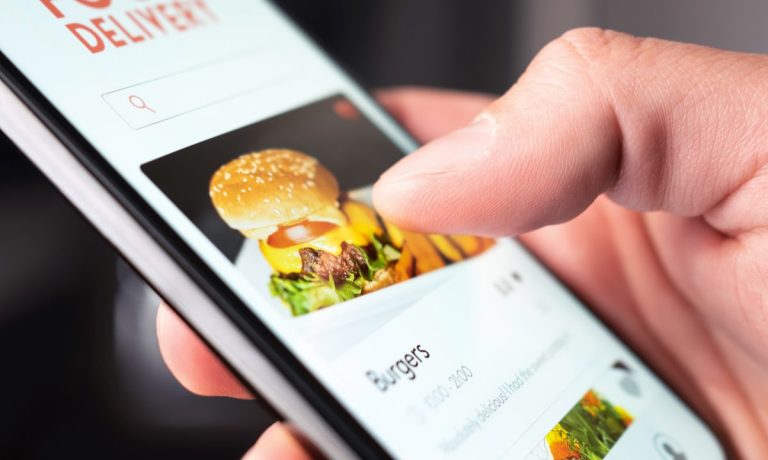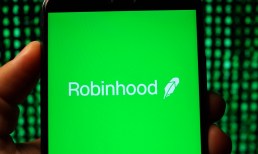Restaurants Now Do 70 Pct Of Sales Online And On Phone, PYMNTS Data Show

The restaurant business may never be the same as it was before COVID, but that doesn’t mean it will be smaller, it means it will be different.
Nowhere is this altered future more pronounced than in the surge of off-premises sales that have pushed take-out and delivery orders to record levels, dramatically scaling back traditional dine-in business.
This, according to PYMNTS latest edition of the Restaurant Readiness Index, which showed remote orders placed digitally via an app, aggregator or online have become the bread and butter of restaurants’ bottom line. Sixty-nine percent of the average restaurant’s sales are now generated either digitally or over the phone, compared to just 31 percent of sales that are generated by orders eaten on-site. And even with in-house dining, the digitally upgraded nature of the vertical is still shining through. Half of all full-service restaurant operators in the United States have added QR code menus since the start of the pandemic, according to the National Restaurant Association, and businesses are increasingly seeing their benefit even as the grand reopening rolls on.
“In 13 years of bar ownership in San Francisco, I’ve never seen a sea change like this that brought the majority of customers into a new behavior so quickly,” Ben Bleiman, owner of San Francisco Bar Teeth, told The New York Times. Teeth has emblazoned its tables with QR codes so consumers can order and pay without ever talking to anyone if they so desire.
And QR codes are part of the story — the bigger tale to be told in the rapidly expanding world of restaurants remaking themselves for whatever comes next in a post-pandemic world. Sometimes, as is the case with QR codes and other advancing ways to order and pay, restaurants are nailing it, the data show. But in other areas, particularly when it comes to creating consumer loyalty, they’re not, mostly because it seems they just don’t get it yet.
Where It’s Working
Where restaurants are standing on increasingly solid ground after what has been an exhausting year-and-a-half long scramble, is when it comes to digital ordering features. Heading into the second half of 2021, 24 percent more restaurants now allow their customers to pay via digital wallets than compared to last year, for example, while 77 percent more restaurants allow customers to pay using some form of digital payment. Restaurants are increasingly demonstrating an understanding of their customers’ digital conversion and are optimizing service offerings to meet their needs.
That’s because they are increasingly convinced those conversions are key to their continued success — 55 percent of restaurants report they believe offering digital payments is key to their future success. A well-founded belief considering restaurant owners on average report that 75 percent of their sales are now coming in via digital order or over the phone. Among consumers, “3.8 percent of consumers say they would be willing to boost food order spend if they could pay in-store using contactless cards, for example. Another 3.1 percent and 2.8 percent say they would spend more if they could pay in person using digital wallets and self-service kiosks, respectively.”
Where Restaurants Need To Invest Next
While restaurants have deeply engaged with the technology that makes is easier and quicker for consumers to buy what they want and how they want it, their overall engagement with expanding into customer loyalty has been notably lagging. Although more than half (52 percent) of restaurants report offering loyalty and rewards products of some kind, overall enthusiasm within the segment for such offerings remains tepid at best. According to PYMNTS data, only 13 percent of restaurant managers report believing that such programs will be integral to their future success.
Which begins to explain why restaurants are 16 percent less likely to be offering some type of loyalty or rewards program now than they were in 2020. But the data also indicates that those restaurants walking away from loyalty are missing an opportunity, as 51 percent of restaurant customers see loyalty and rewards as a major factor that will help determine whether restaurants succeed in the long run.
And loyalty isn’t alone in being overlooked — the data also finds restaurants also miss their customers’ interest in drive-thru pickup options. Forty percent of restaurant customers say that drive-thru pickup options will be important to restaurants’ future success, and just 26 percent of restaurant managers believe they will.
And it’s a miss with costs, the index notes. The 100 restaurants with the highest Restaurant Readiness Index scores in our survey (top performers) are also the most likely to offer some type of loyalty and rewards program, with 94 percent of 2021’s top performing restaurants providing loyalty and rewards options.
Restaurants are changing, and while it is deeply unlikely they will ever go fully digital — people are always going to want a dining experience where someone brings them the food and clears the plates — the data clearly demonstrates it will be a digitally enhanced experience going forward. And the restaurants that end up on the top of the heap will dig increasingly deeply into the full pile of options now at their discretion to bring to the table.



